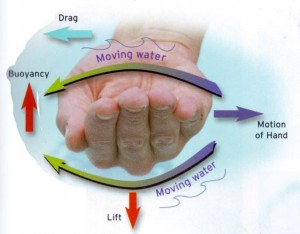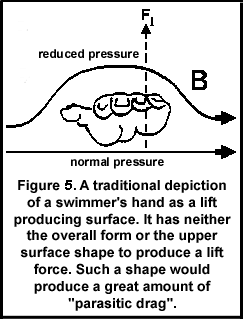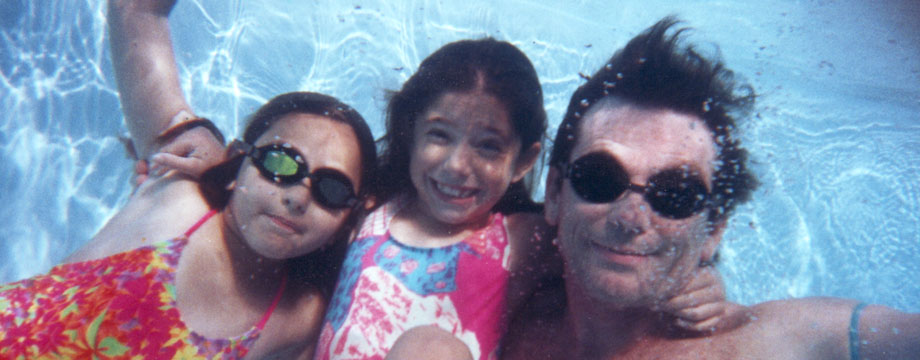
What the heck is Buoyancy doing here?
(Click for larger image)
Since Doc Counsilman’s research on swimming began in the 1970s, coaches and swimmers have been using scientific methods to find the best way(s) to move through the water quickly. Imitation of champions’ techniques were a sensible way to improve, but the science behind the performance tended to lag behind. Most instructional books will, at some point, refer to the physics of the Bernoulli Principle, which explains how airplane wings generate lift. The same principle applies to boat propeller design and the hydrofoils used on some watercraft.
Usually, you will see a vector diagram or drawing that attempts to explain arm and hand motions as relevant examples for swimmers. There is one slight problem: Our hands and arms are not shaped in a way that would make them useful as lift generators based on Bernoulli. That is not to say that sculling is wrong–it is definitely a component for an efficient stroke. Here is a link to a summary of studies of the physics that make for efficient, fast (championship) swimming, specifically the role “lift” plays in overall stroke performance.
Swimming Technique: Propulsion through drag or lift? (opens in new window, site is bilingual).
The article was published in 2001, and much of the research was done in the mid-1990s. The conclusion states:
In this example, many of us were quick to accept theory as fact before sufficient evidence was available. It may still be too early to state that freestyle propulsion is dominated by drag, but the commonly held belief that it is dominated by lift may be ill-founded and incorrect.

(from Rushdall article)
Yet most books, written after this research was published, still have the obligatory diagrams, etc., attempting to tie the Bernoulli Principle to proper technique!
Here is a link to another article, by Brent Rushdall, that debunks the whole “lift” theory:
Lift is not an Important Force in Swimming Propulsion (opens in a new window).

